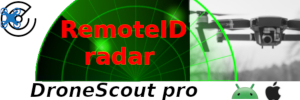Maybe more like helicopter controls than fixed wing, the right stick behaving like a cyclic and the left like a compound (only backwards) combined with rudder pedals? When I first started flying, not too many months ago, the action of the left stick seemed counterintuitive to me, pushing forward to climb and pulling back to descend. Quite the opposite to the stick or yoke in any fixed wing craft or simulator.
The reason for this is obscure to most DJI pilots who've never flown manual.
In FPV drones in "manual" mode, the left stick up/down is a true throttle, where position maps to rpm. This is why for manual mode the left stick vertical movement is modified to be unsprung so it stays where you put it and doesn't recenter.
As drones evolved, more and more tech was added to make flying easier, and "angle mode" was invented as a new way to command the drone. This has come so far now that the Flight Controller in the drone does all the hard work, while the sticks have become very indirect control, rather specifying a proportional percentage of max speed over the ground, and whether to ascend or descend, rather than controlling the attitude of the aircraft.
The FC controls pitch and roll angles, and throttle, to achieve the speed over the ground you are commanding with stick position, and holding altitude or ascending/descending based on stick input.
Only yaw works the way it always has from the very beginning of RC quads.
To learn the fullest, most "native" flight experience, you must fly in "rate mode" (Manual on DJI drones).
The good news is you don't have to drop some bank on an
Avata 2 + FPV RC2... just download the DJI simulator (free), select the
Avata 2, put it in Manual, and start crashing!











